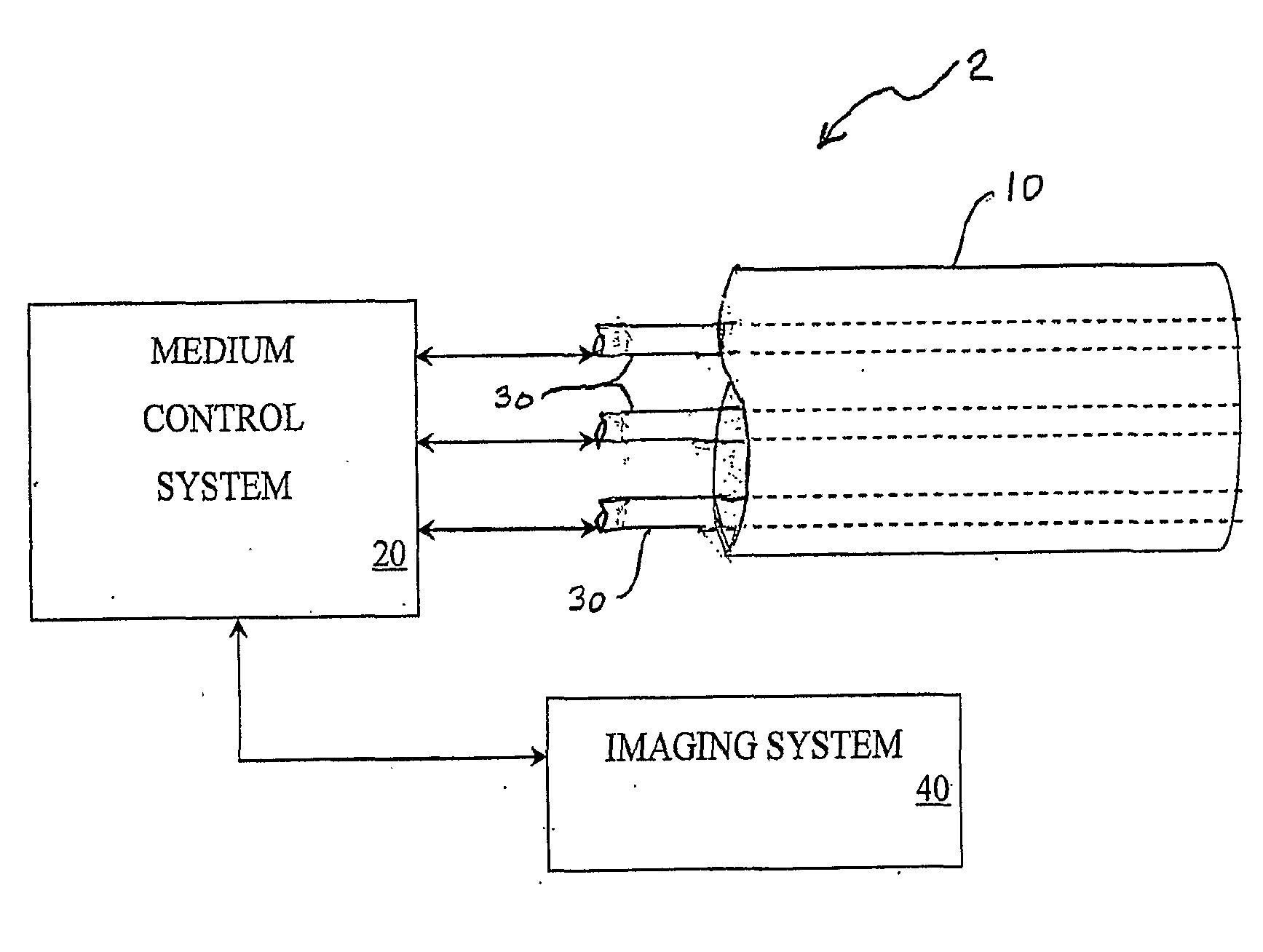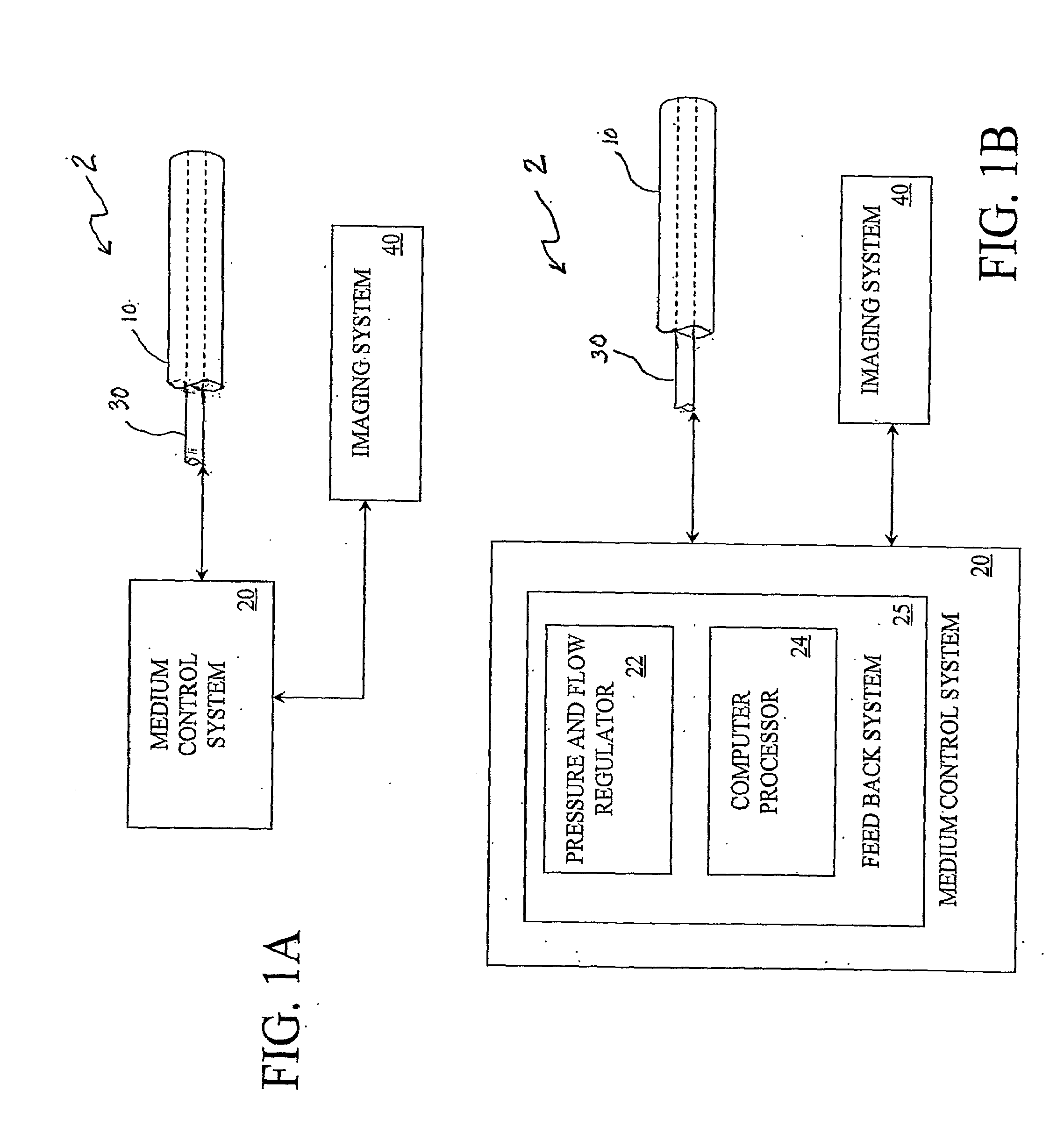Multi-Port Catheter System with Medium Control and Measurement Systems for Therapy and Diagnosis Delivery
a catheter system and measurement system technology, applied in the field of multi-port catheter systems with medium control and measurement systems for therapy and diagnosis delivery, can solve the problems of significant morbidity and mortality, tissue and amputation death, potentially serious side effects, etc., to reduce the duration of therapy, increase safety, and reduce the effect of tim
- Summary
- Abstract
- Description
- Claims
- Application Information
AI Technical Summary
Benefits of technology
Problems solved by technology
Method used
Image
Examples
Embodiment Construction
[0039]FIG. 1(A) is a schematic illustration of an embodiment of the catheter system 2. The catheter system 2 comprises an outer tube 10, or guide catheter, within which is an inner tube 30, or delivery catheter. This catheter system 2 is used to deliver (or withdraw) a medium through the use of a medium control system 20, which may monitor the process through the attached imaging system 40.
[0040]FIG. 1(B) schematically illustrates the medium control system 20 of FIG. 1(A), wherein the medium control system 20 comprises a feed back system 25 that may comprise a pressure and flow regulator 22, controlled by a computer processor 24, for example, which can automate the process of transferring a medium to a plurality of locations in the subject 4 (not shown). The imaging data from the imaging system 40, and the pressure and flow-rate data from each inner catheter 30 may be fed into the host computer or processor 24. An algorithm in the host computer or processor 24 may be used to process...
PUM
 Login to View More
Login to View More Abstract
Description
Claims
Application Information
 Login to View More
Login to View More - R&D
- Intellectual Property
- Life Sciences
- Materials
- Tech Scout
- Unparalleled Data Quality
- Higher Quality Content
- 60% Fewer Hallucinations
Browse by: Latest US Patents, China's latest patents, Technical Efficacy Thesaurus, Application Domain, Technology Topic, Popular Technical Reports.
© 2025 PatSnap. All rights reserved.Legal|Privacy policy|Modern Slavery Act Transparency Statement|Sitemap|About US| Contact US: help@patsnap.com



